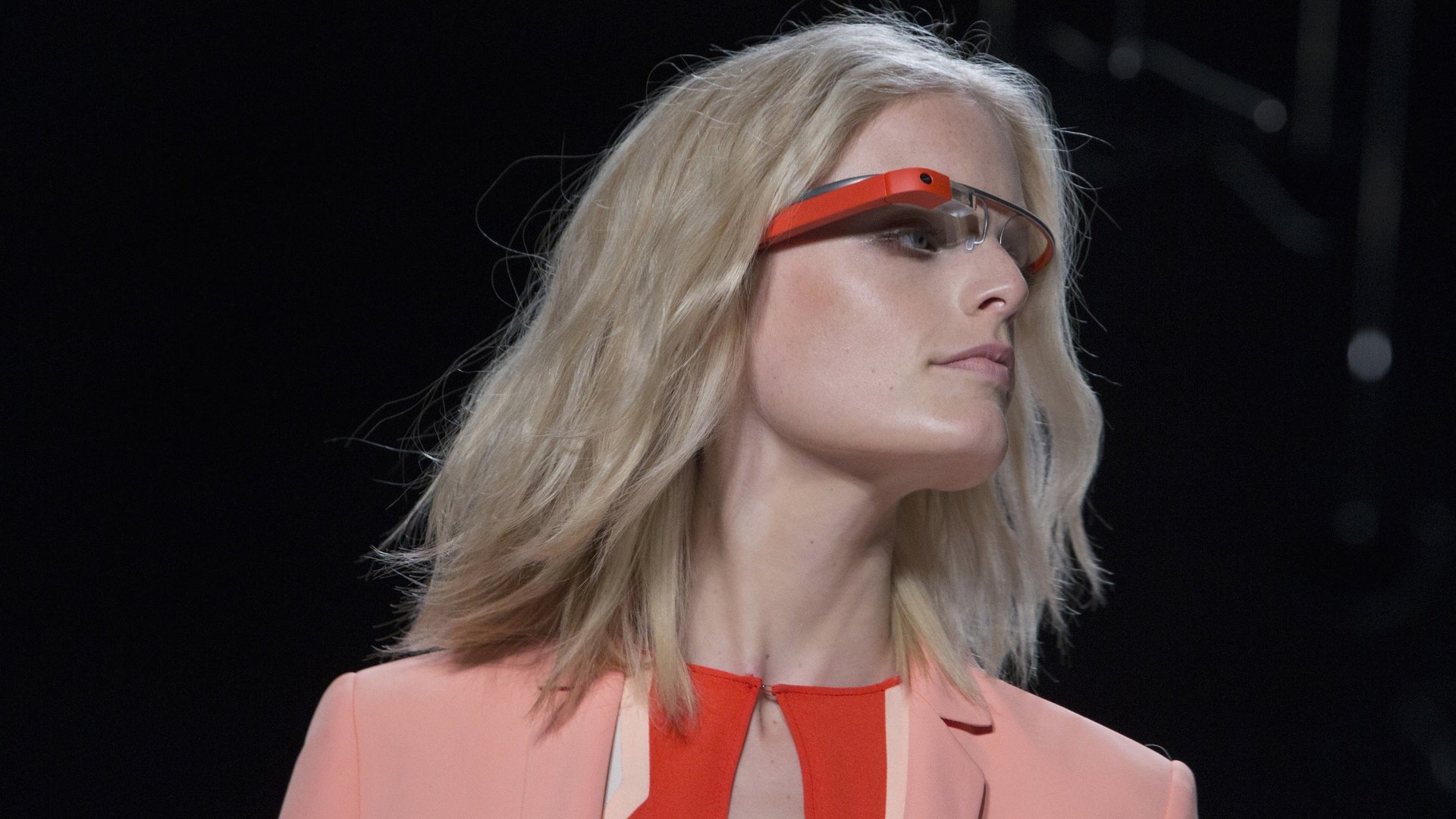Four questions to answer before you put a computer on your face
While total virtual reality goggles may soon enter the mainstream, thanks to Facebook’s acquisition of Oculus Rift, it’s augmented reality glasses—which place digital images and information over real life objects directly in front of your eyeballs—that could one day truly integrate with your daily life. Virtual reality would allow you to escape your humdrum life; augmented reality promises to enrich it, instead.


While total virtual reality goggles may soon enter the mainstream, thanks to Facebook’s acquisition of Oculus Rift, it’s augmented reality glasses—which place digital images and information over real life objects directly in front of your eyeballs—that could one day truly integrate with your daily life. Virtual reality would allow you to escape your humdrum life; augmented reality promises to enrich it, instead.
Google Glass and other smart eyewear was a hot topic at Augmented World Expo: New York on March 25. But even in a room full of augmented reality enthusiasts—many sporting Google Glass or a competing product—the crowd seemed far from certain that Glass would be widely used.
Here are some questions that need answering before the future of eye wearables is secure:
1. Will wearing a computer on your face ever be socially acceptable?
It’s possible that Google Glass will go from being a status symbol (though one with a lot of negative connotations) to a ubiquitous personal tool, as the cellphone has. Dan Cui, the VP of business development at Google Glass competitor Vuzix, argued at the expo that face computers will actually improve our social graces.
“This is opening us up to a truly natural interface,” he said. “It’s the end of looking down at your phone as you walk. You’ll be looking right out at the world and interacting with it. Looking down at a keyboard and screen will probably seem really awkward to us in a few years.”
But how quickly will we adapt to dividing our attention to our peers and the screens between us?
2. Will wearing a computer on your face ever be fashionable?
When just a handful in the audience seemed eager to wear a Google Glass-like product on their faces every day, Cui accused the room of “just being vain.” Blaming vanity for any reluctance to put Google Glass on may be a tad simplistic, but the awkward appearance is certainly a barrier for many people. Still, as Cui went on to point out, even dangling headphone cords have managed to become fashionable.
Attempts to insert Google Glass into the world of high fashion show that the company understands that this challenge exists, but overcoming it will be another matter. We’re picky about what tech we put on or near our faces: While headphones have become a constant accessory for some, Bluetooth headsets never quite took off.
3. What should your face computer even look like?
An obvious way to handle the previous question is to try to make Google Glass look more like regular “dumb” glasses. But while the hardware required to turn your glasses into a computer has gotten much smaller in recent years, it’s still too hefty to fit seamlessly into a pair of typical specs. Google recently announced that the vintage-inspired eyewear brand Warby Parker would design a few frames for Google Glass, and have since announced similar partnerships with Ray-Ban and Oakley, popular sunglass brands owned by Luxottica SpA. But it looks like these will just be normal glasses with the hardware tacked on, which somehow seems even more awkward than the original:
We’re seeing the same issue in smartwatches, Attempts to make a “more fashionable” model result in different-but-equally-awkward watches that don’t really appeal to early adopters or fashionistas.
4. How much can your face computer do for you?
Google Glass is a new product: Its functions will only multiply. But as Google Glass Explorer Allen Firstenberg said during his Expo presentation, wearables are really just supplementary gadgets. They don’t do anything new; they just do it slightly more conveniently. “I use the camera on my Google Glass as a backup memory,” Firstenberg said, explaining that he snaps pictures of things he never would have bothered to pull his phone out for. ”I can do it quickly and move on quickly.”
But with the price of Glass unlikely to dip under $500 in 2014, it’s worth asking how many consumers will actually shell out for that convenience.